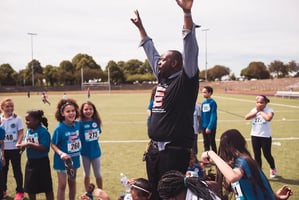There Is A Queer Agenda: Creating Brave Inclusive Care Communities for LGBTQIA Students & Staff by...
How to create a culture of safety and inclusiveness for LGBTQIA youth in learning spaces by Craig Martin

Imagine being a 15-year-old kid, learning certain things in a school that relates to others but do not apply to you. Imagine being bullied by your peers just because you do not fit into the usual gender norms. Well, LGBTQIA youth does not have to imagine this; it is a part of their reality. Schools have various important responsibilities, but one of the main responsibilities is to ensure that students feel safe inside and outside classrooms. This can only happen when you learn to create inclusive learning spaces for LGBTQIA students.
This article has given some useful strategies teachers, principals, and parents can use to foster an inclusive LGBTQIA learning environment.
What is LGBTQIA?
LGBTQIA is an inclusive term used to represent a wide range of gender identities and sexual orientations. It is an acronym that stands for:
- Lesbian
- Gay
- Bisexual
- Transgender
- Queer
- Intersex
- Asexual
Why is it important to create inclusive learning spaces?
Children need to know that their parents and teachers care about them. However, many LGBTQIA students feel unwelcome and unsafe at schools and learning spaces. A study shows more than 60 percent of LGBTQIA students do not feel safe at school. This can be a huge problem for LGBTQIA youth because if they do not feel safe at school, they will not learn. It is also a huge cause of depression and anxiety among LGBTQIA students. Thus, parents and teachers must learn the right tools and strategies to create inclusive learning spaces.
Strategies to create an inclusive and welcoming environment:
Make an LGBTQIA-positive curriculum:
Sex education is the key to making an inclusive learning environment. Schools must integrate positive material related to LGBTQIA into the SRE curriculum. Moreover, teachers can also integrate LGBTQIA topics into other subjects such as art, literature, health, and history. This can be a great way to include every student in learning practices.
Plan inclusive activities:
It is paramount that teachers and parents know and understand LGBTQIA youth. For this, they can try fun activities with them to build trust. Thus, schools must devise their activities by keeping every student in mind. Schools should also plan family educational activities where they can inform parents how to understand LGBTQIA youth and create an inclusive environment both at home and school.
Be careful of pronouns:
Schools need to be mindful of pronouns for LGBTQIA youth. It would help if you communicated to the students that you care about their identities. Thus, teachers should use the pronouns of LGBTQIA students carefully. Schools should also encourage other students to use correct pronouns for each other.
Make a student forum:
The best way to create inclusive learning spaces for LGBTQIA youth is by considering their opinions and ideas. You can make a student forum where students can raise their concerns anonymously. Schools should also conduct pre-semester surveys or interviews to ask students what they want their teachers and peers to know about their needs and identity. In this way, all students will get the opportunity to share whatever they want their peers and teachers to know about them. This will give the right information to teachers on how to interact with LGBTQIA students. It will also send a message to them that the school is sensitive to their identity issues.
Make a gender-neutral uniform:
In some learning spaces, students wear uniforms. In that case, you must allow gender-neutral uniforms and clothing. Students should not be restricted from wearing certain clothes as this can make LGBTQIA students uncomfortable.
Conclusion:
It is important to note that the impact of learning spaces on students' lives is overwhelmingly powerful. Thus, making an inclusive and caring learning environment for LGBTQIA youth is crucial.




